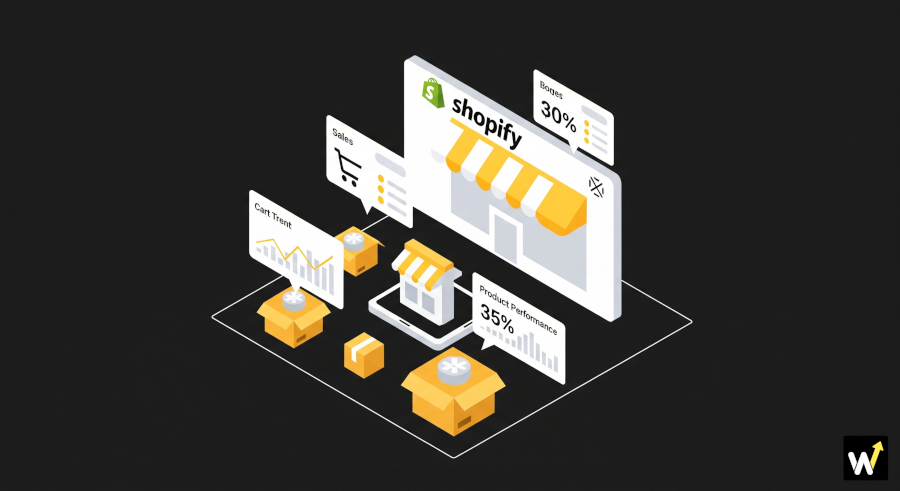Discounts are one of the most powerful tools in eCommerce. They attract attention, encourage purchases, and can even help clear inventory quickly. On Shopify, running discount campaigns—whether through discount codes, automatic discounts, or BOGO deals—is simple and effective.
But here’s the catch: while discounts can boost sales in the short term, they can also eat into your profit margins if not managed carefully. Many Shopify store owners focus only on revenue growth and overlook how much profit they’re sacrificing through excessive or poorly structured discounts.
In this blog, we’ll break down the real cost of discounts, show you how to calculate their impact on profits, and share tips to use discounts strategically without hurting your bottom line.
Why Discounts Can Be Risky for Shopify Stores?
Discounts feel like a quick win, but they come with hidden challenges:
1. Lower Profit Margins
Every discount you offer reduces the amount of money left after covering product costs, shipping, ads, and other expenses. For example, if your product costs $20 and you sell it for $50, your gross margin is $30. Offering a 20% discount lowers the selling price to $40, leaving you only $20 in margin—cutting profits by one-third.
2. Customer Expectations
When discounts are used too often, customers start waiting for sales instead of buying at full price. This makes it harder to sustain regular pricing and creates long-term dependency on discounts.
Related reading: The Role of Customer Experience in Boosting Shopify Sales
3. Increased Ad Spend Pressure
Discounts can drive more clicks and sales through paid ads, but if your margins shrink, the return on ad spend (ROAS) drops. You may end up spending more on ads than you actually earn in profits.
4. Brand Value Dilution
Constant discounts can make your brand look “cheap.” If you’re building a premium image, too many discounts can damage trust and positioning.
👉 This doesn’t mean you should avoid discounts altogether. Instead, it’s about understanding the true cost and using them wisely.
How to Calculate the Real Cost of Discounts?
To run sustainable promotions, Shopify store owners need to measure how discounts affect profitability. Here’s a simple way to calculate it:
1. Know Your Cost Per Product (CPP):
Add up the manufacturing cost, packaging, shipping, and Shopify fees.
Example: $20 total cost per unit.
2. Set Your Selling Price (SP):
The regular retail price you sell at.
Example: $50 per unit.
3. Calculate Gross Margin (GM):
SP – CPP = GM.
$50 – $20 = $30 margin.
4. Apply the Discount:
A 20% discount reduces the price to $40.
New Margin = $40 – $20 = $20.
5. Check Break-Even Point:
If you also run ads at $10 cost per conversion, your profit shrinks further to $10 per order. This simple math shows how quickly discounts reduce profit, even when sales volume increases.
Pro Tip: Before launching a discount, calculate how many more units you’d need to sell at the reduced margin to match your usual profit. Sometimes, the increase in sales volume doesn’t balance the loss in margin.
Smarter Ways to Use Discounts on Shopify
Discounts don’t have to destroy profits. The key is to structure them in ways that increase order value, improve loyalty, or drive urgency. Here are some effective approaches:
1. Bundle Discounts Instead of Flat Discounts
Instead of slashing prices, encourage larger purchases. For example:
- “Buy 2, Get 1 Free” (B2G1)
- “Buy 3, Save 15%”
This ensures customers spend more per transaction, helping offset lower margins. Apps like Wizio Bundle: Quantity Breaks make it easy to set up bundle pricing on Shopify without coding.
2. Set Minimum Spend Thresholds
Offer discounts only when customers reach a certain cart value.
Example: “Get 10% off when you spend $75 or more.”
This strategy encourages bigger orders while protecting your margins on smaller sales.
3. Use Discounts for New Customers or Specific Campaigns
Instead of running storewide sales, target discounts for:
- First-time buyers (welcome discount)
- Email subscribers (exclusive code)
- Abandoned cart recovery messages
This way, discounts serve as a growth tool rather than a constant price cut.
4. Focus on Time-Limited or Seasonal Discounts
Urgency drives conversions. A “48-hour flash sale” or “holiday special” can create excitement without training customers to always expect lower prices.
5. Reward Loyalty Without Slashing Prices
Instead of big discounts, offer perks like free shipping, early access to sales, or loyalty points. These maintain value without heavy profit loss.
Also read: Best Shopify Conversion Rate Optimisation Hacks for 2025
Conclusion: Balance Sales and Profitability
Discounts can be a double-edged sword for Shopify stores. While they help attract buyers and drive sales, they also reduce margins, change customer behavior, and risk hurting brand value if overused.
The key is to understand the real cost of discounts before launching them. Always calculate how they impact profits, and choose smarter approaches like bundle deals, minimum spend thresholds, or targeted campaigns instead of blanket price cuts.
By using discounts strategically, you can grow your Shopify sales while keeping profits strong—a win-win for both your business and your customers.
Frequently Asked Questions
1. How do discounts affect Shopify store profits?
Discounts reduce your profit margins by lowering the selling price while costs remain the same. If not planned carefully, they can cut profits significantly.
2. How can I calculate the real cost of discounts?
Subtract your product cost from the discounted price to find the new margin. Then factor in ad spend, shipping, and Shopify fees to see the actual profit per sale.
3. Are discounts always bad for Shopify stores?
No. Discounts can boost sales and attract new customers when used strategically. The key is structuring them in a way that increases order value and protects profit margins.
4. What type of discount works best on Shopify?
Bundle offers like “Buy 2, Get 1 Free,” minimum spend discounts, or time-limited sales usually work better than flat percentage discounts. They drive higher order value and maintain profits.
5. How often should I run discounts on my store?
Use discounts occasionally for promotions, seasonal events, or new customer acquisition. Avoid running them constantly to prevent customers from relying only on discounted prices.
6. What are alternatives to giving discounts?
You can offer free shipping, loyalty rewards, early access to sales, or bundle deals instead of heavy discounts. These strategies improve customer satisfaction without hurting profit margins.




